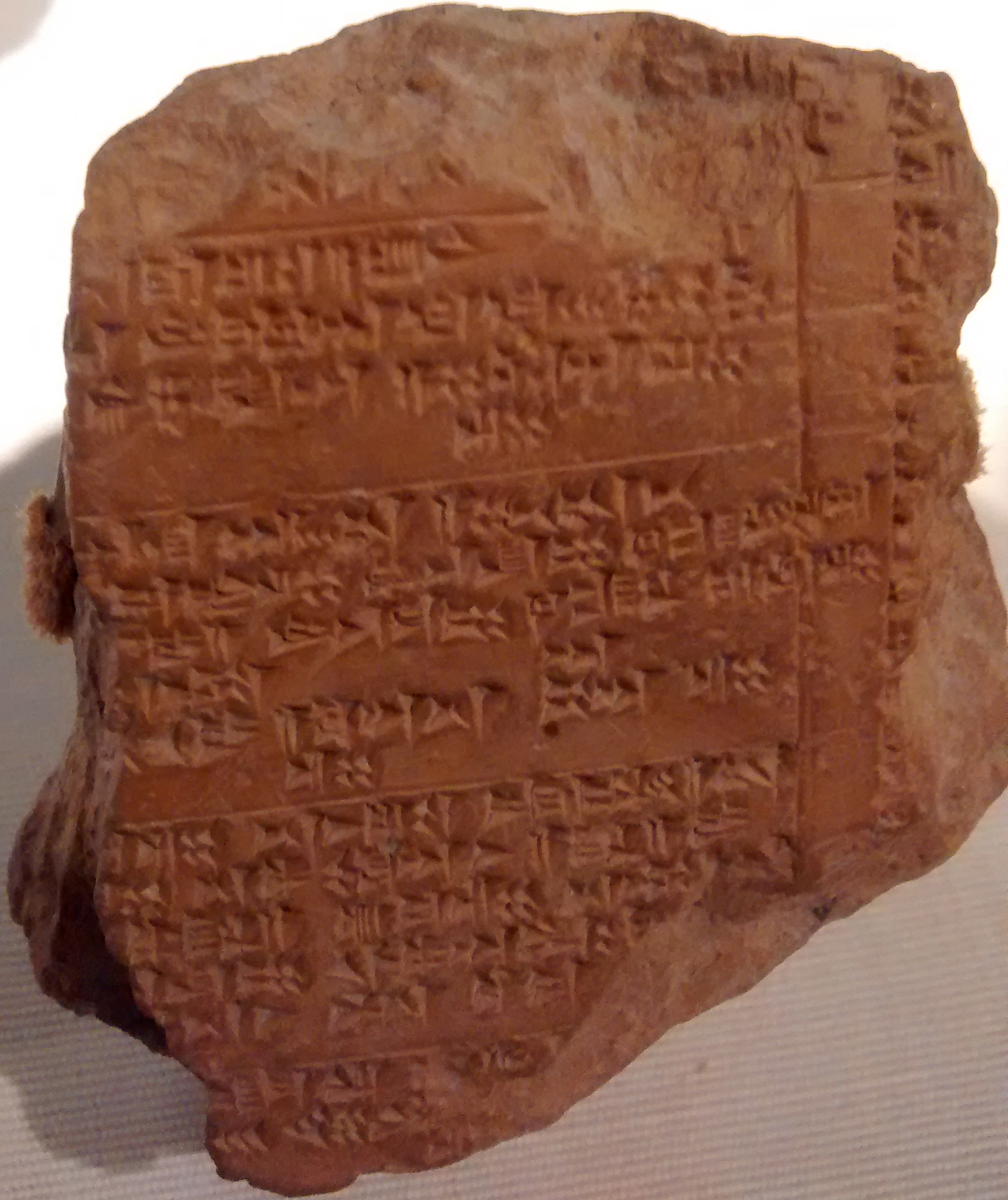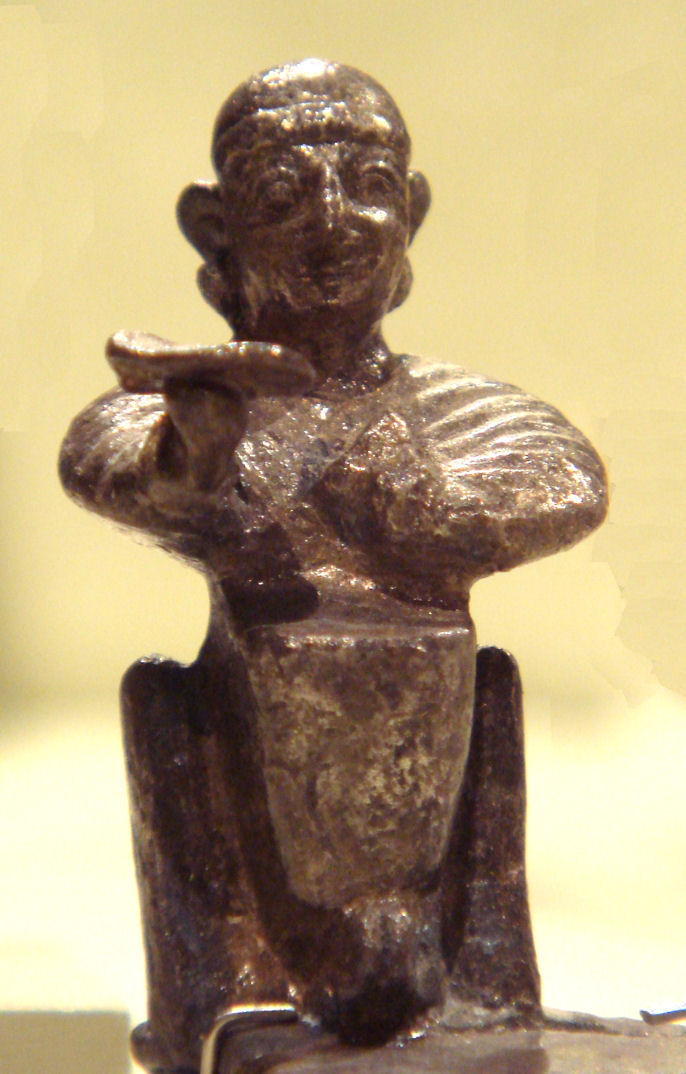|
Palaic Peoples
Pala (cuneiform ''pa-la-a'') was a Bronze Age country in Northern Anatolia. Little is known of Pala except its native Palaic language and its native religion. The only known person of Palaic origin was the ritual priestess Anna. Their language shared common innovations with Luwian not present in the Hittite language suggesting a prior Luwian-Palaic linguistic complex. Location Pala is said to have been bordered by Tummana to the east, Kalasma to the west and Kaissiya to Mount Asharpaya toward the south. The country named *Bla leading to Blaene in cuneiform script was written as ''pa-la-a''. The country of Pala may have been located along the Black Sea coast, either in the region known as Paphlagonia in classical antiquity or the much smaller territory of Blaene located within, though it has been alternately located near modern-day Sivas as well. History In the Old Hittite period Pala was mentioned as an administrative area under Hittites, Hittite jurisdiction in the Hittite ... [...More Info...] [...Related Items...] OR: [Wikipedia] [Google] [Baidu] |
Palaic Language
Palaic is an extinct Indo-European languages, Indo-European language, attested in cuneiform tablets in Bronze Age Hattusa, the capital of the Hittites. Palaic, which was apparently spoken mainly in northern Anatolia, is generally considered to be one of four primary sub-divisions of the Anatolian languages, alongside Hittite language, Hittite (central Anatolia), Luwic (southern Anatolia) and Lydian language, Lydian (western Anatolia). Its name in Hittite language, Hittite is ''palaumnili'', or "of the people of Pala"; Pala (Anatolia), Pala was probably to the northwest of the Hittite core area, so in the northwest of present mainland Turkey. The region was overrun by the Kaskians in the 15th century BC, and the language likely went out of daily use at that time. Sources The entire corpus of Palaic spans only CTH 751-754 in Emmanuel Laroche's catalog of Hittite texts; in addition Hittite texts elsewhere cite passages in Palaic in reference to the weather god Zaparwa (Hittite la ... [...More Info...] [...Related Items...] OR: [Wikipedia] [Google] [Baidu] |
Kaskians
The Kaska (also KaéÀka, later Tabalian Kasku and Gasga,) were a loosely affiliated Bronze Age non-Indo-European tribal people, who spoke the unclassified Kaskian language and lived in mountainous East Pontic Anatolia, known from Hittite sources. They lived in the mountainous region between the core Hittite region in eastern Anatolia and the Black Sea, and are cited as the reason that the later Hittite Empire never extended northward to that area. They are sometimes identified with the Caucones known from Greek records. Early history The Kaska, probably originating from the eastern shore of the Propontis,Toumanoff, Cyril (1967). ''Studies in Christian Caucasian History'', pp. 55ã56. Georgetown University Press. may have displaced the speakers of the Palaic language from their home in Pala. The Kaska first appear in the Hittite prayer inscriptions that date from the reign of Hantili II, c. 1450 BC, and make references to their movement into the ruins of the holy city of Neri ... [...More Info...] [...Related Items...] OR: [Wikipedia] [Google] [Baidu] |
Palaic Peoples
Pala (cuneiform ''pa-la-a'') was a Bronze Age country in Northern Anatolia. Little is known of Pala except its native Palaic language and its native religion. The only known person of Palaic origin was the ritual priestess Anna. Their language shared common innovations with Luwian not present in the Hittite language suggesting a prior Luwian-Palaic linguistic complex. Location Pala is said to have been bordered by Tummana to the east, Kalasma to the west and Kaissiya to Mount Asharpaya toward the south. The country named *Bla leading to Blaene in cuneiform script was written as ''pa-la-a''. The country of Pala may have been located along the Black Sea coast, either in the region known as Paphlagonia in classical antiquity or the much smaller territory of Blaene located within, though it has been alternately located near modern-day Sivas as well. History In the Old Hittite period Pala was mentioned as an administrative area under Hittites, Hittite jurisdiction in the Hittite ... [...More Info...] [...Related Items...] OR: [Wikipedia] [Google] [Baidu] |
Inara (goddess)
Inara, in Hittite mythology, was the goddess of the wild animals of the steppe and daughter of the Storm-god Teshub/ Tarhunt.Christopher SirenHittite/Hurrian Mythology REF 1.2 Retrieved April 27, 2010. She corresponds to the " potnia theron" of Greek mythology, better known as Artemis. Myths After the dragon Illuyanka wins an encounter with the storm god, the latter asks Inara to give a feast, most probably the ''Purulli'' festival. Inara decides to use the feast to lure and defeat Illuyanka, who was her father's archenemy, and enlists the aid of a mortal named Hupasiyas of Zigaratta by becoming his lover. The dragon and his family gorge themselves on the fare at the feast, becoming quite drunk, which allows Hupasiyas to tie a rope around them. Inara's father can then kill Illuyanka, thereby preserving creation. Inara built a house on a cliff and gave it to Hupasiyas. She left one day with instructions that he was not to look out the window, as he might see his family. But he ... [...More Info...] [...Related Items...] OR: [Wikipedia] [Google] [Baidu] |
Hasameli
Hasameli (also HaéÀamili) was the Hittite god of metalworkers and craftsmen. Associated with smoke, he is called on by Mursili II in his Annals to encircle and cloak him that he be concealed from his enemy in a covert assault. He may be related with the Greek Hephaestus. See also * Hittite mythology Hittite mythology and Hittite religion were the religious beliefs and practices of the Hittites, who created an empire centered in what is now Turkey from . Most of the narratives embodying Hittite mythology are lost, and the elements that wo ... Hittite deities {{MEast-myth-stub ... [...More Info...] [...Related Items...] OR: [Wikipedia] [Google] [Baidu] |
Tiyaz
Tiyaz or Tiyad was the sun god of the Palaians, regarded as the third most important deity in their pantheon. He was also incorporated into Hittite religion. He appears in a ritual written in Palaic, though presumed to belong to a Hittite corpus, in which he is implored to anoint the king. After the fall of the Hittite Empire, he might have been worshiped by Phrygians. Name Attested forms of the name of the Palaic sun god include Tiyaz and Tiyad. The spelling Tiwat, while present in some academic publications, is considered erroneous. It is presumed his name could also be represented by the Sumerogram dUTU, much like those of other solar deities mentioned in Hittite sources, such as Hurrian é imige or Hattian IéÀtanu. The theonym Tiyaz is derived from the Indo-European root '' diáu(-ot)-'', "(heavenly) light", and is a cognate of Luwian Tiwaz. In Hittite the same root only formed the basis of the common words ''éÀiwat'', "day", and ''éÀiuéÀ'', "god", while more distant cogn ... [...More Info...] [...Related Items...] OR: [Wikipedia] [Google] [Baidu] |
Hattian Language
Hattic, or Hattian, was a non-Indo-European agglutinative language spoken by the Hattians in Asia Minor in the 2nd millennium BC. Scholars call the language "Hattic" to distinguish it from Hittite, the Indo-European language of the Hittite Empire. The Hittites referred to the language as ''"hattili"'' (there are no attestations of the name of the language in Hattic itself). The name is doubtlessly related to the Assyrian and Egyptian designation of an area west of the Euphrates as "Land of the Hatti" (Khatti). The heartland of the oldest attested language of Anatolia, before the arrival of Hittite-speakers, ranged from Hattusa, then called "Hattus", northward to Nerik. Other cities mentioned in Hattic include Tuhumiyara and Tissaruliya. Hittite-speakers conquered Hattus from Kanesh to its south in the 18th century BC. They eventually absorbed or replaced the Hattic-speakers (Hattians) but retained the name ''Hatti'' for the region. The name of the inhabitants of that area is li ... [...More Info...] [...Related Items...] OR: [Wikipedia] [Google] [Baidu] |
Ziparwa
Ziparwa, originally known as Zaparwa, was the head of the pantheon of the Palaians, inhabitants of a region of northern Anatolia known as Pala in the Bronze Age. It is often assumed that he was a weather god in origin, though he was also associated with vegetation. Information about the worship of Ziparwa comes exclusively from Hittite texts, though some of them indicate that formulas in Palaic were used during festivals dedicated to him held in Hittite cities such as Hattusa. Name and character Ziparwa was the head of the "extremely heterogenous" pantheon of the Palaians, speakers of Palaic, a language closely related to Hittite and Luwian. In the Bronze Age they inhabited Pala, a northern region of Anatolia which later came to be known as Paphlagonia. The original Palaic form of Ziparwa's name, Zaparwa, was spelled in cuneiform as '' dZa-pûÀr-waa(-a)-'', while the standard Hittite spelling was ''dZi-pûÀr-waa(-a)-''. The signs with subscripts, such as ''waa'', constituted a Hi ... [...More Info...] [...Related Items...] OR: [Wikipedia] [Google] [Baidu] |
Luwian Mythology
Luwian religion was the religious and mythological beliefs and practices of the Luwians, an Indo-European people of Asia Minor, which is detectable from the Bronze Age until the early Roman empire. It was strongly affected by foreign influence in all periods and it is not possible to clearly separate it from neighbouring cultures, particularly Syrian and Hurrian religion. The Indo-European element in the Luwian religion was stronger than in the neighbouring Hittite religion. Periodisation The Luwian religion can be divided into two periods: the Bronze Age period and the Iron Age or Late Luwian period. During the Bronze Age, the Luwians were under the control of the Hittites. They spoke the Luwian language, a close relative of the Hittite language. Although a hieroglyphic script existed in the Bronze Age, which was used for writing Luwian, there are only a few known religious texts of the Luwians from the Bronze Age. After the collapse of the Hittite empire, several Late Luwian ... [...More Info...] [...Related Items...] OR: [Wikipedia] [Google] [Baidu] |
Hittite Mythology
Hittite mythology and Hittite religion were the religious beliefs and practices of the Hittites, who created an empire centered in what is now Turkey from . Most of the narratives embodying Hittite mythology are lost, and the elements that would give a balanced view of Hittite religion are lacking among the tablets recovered at the Hittite capital Hattusa and other Hittite sites. Thus, "there are no canonical scriptures, no theological disquisitions or discourses, no aids to private devotion". Some religious documents formed part of the corpus with which young scribes were trained, and have survived, most of them dating from the last several decades before the final burning of the sites. The scribes in the royal administration, some of whose archives survive, were a bureaucracy, organizing and maintaining royal responsibilities in areas that would be considered part of religion today: temple organization, cultic administration, reports of diviners, make up the main body of sur ... [...More Info...] [...Related Items...] OR: [Wikipedia] [Google] [Baidu] |
áˆattuéÀa
Hattusa (also áˆattuéÀa or Hattusas ; Hittite: URU''áˆa-at-tu-éÀa'',Turkish: Hattuéaé , Hattic: Hattush) was the capital of the Hittite Empire in the late Bronze Age. Its ruins lie near modern Boáazkale, Turkey, within the great loop of the KáÝzáÝláÝrmak River (Hittite: ''Marashantiya''; Greek: '' Halys''). Hattusa was added to the UNESCO World Heritage Site list in 1986. Surroundings The landscape surrounding the city included rich agricultural fields and hill lands for pasture as well as woods. Smaller woods are still found outside the city, but in ancient times, they were far more widespread. This meant the inhabitants had an excellent supply of timber when building their houses and other structures. The fields provided the people with a subsistence crop of wheat, barley and lentils. Flax was also harvested, but their primary source for clothing was sheep wool. They also hunted deer in the forest, but this was probably only a luxury reserved for the nobility. Domesti ... [...More Info...] [...Related Items...] OR: [Wikipedia] [Google] [Baidu] |


